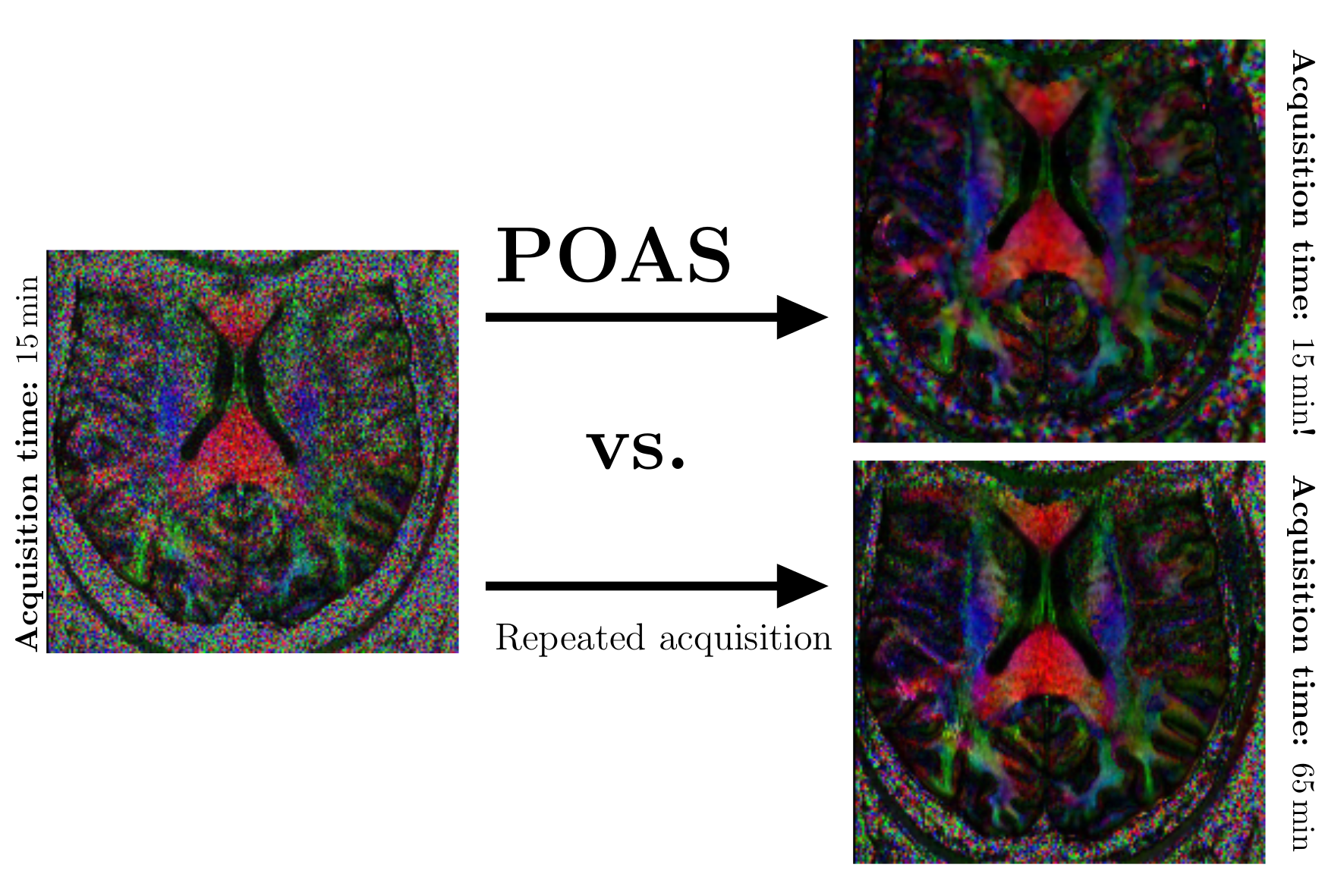(ms)POAS - (multi-shell) Position-Orientation Adaptive Smoothing
What is POAS?
POAS is an adaptive denoising method for diffusion MR data. It reduces noise in the data without blurring the fine structures observed in dMRI. It does not rely on any specific diffusion model for the data and hence does not introduce a bias toward any of them. In fact, after using POAS any appropriate diffusion model can be applied whith much less variable estimates for the model parameters. The methods uses the specific geometry of the space of (voxel) position and (gradient) orientation to define neighborhood in the measurement space. It assumes that the signal in this measurement space is characterized by regions with constant signal but of unknown shape and size, which are separated by discontinuities. A violation, e.g., by a smoother signal change in the regions, of this assumption results in a step function approximation with small steps. For details of the method, see Becker et al. (2012). The extension for multi-shell data is called msPOAS. The software is for academic use only. It is developed by Jörg Polzehl and Karsten Tabelow at the Weierstrass Institute for Applied Analysis and Stochastics Berlin.
Use (ms)POAS
Go to this wiki for instruction how to use this toolbox.
A quick demo

Fig. 1: POAS applied on dMRI reduces noise for more stable estimates, e.g., in the diffusion tensor model. The achieved quality is comparable with the result of averaging 4 subsequent scans of the same subject. Obviously thus took approximately four times longer at the scanner then the result by POAS, which runs offline.
Read more
Becker S, Tabelow K, Voss HU, Anwander A, Heidemann RM, Polzehl J (2012) Position-orientation adaptive smoothing of diffusion weighted magnetic resonance data (POAS). Medical Image Analysis 16: 1142-1155, 2012. doi: 10.1016/j.media.2012.05.007